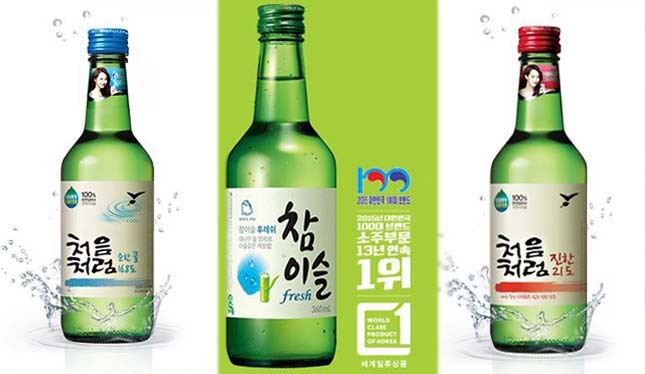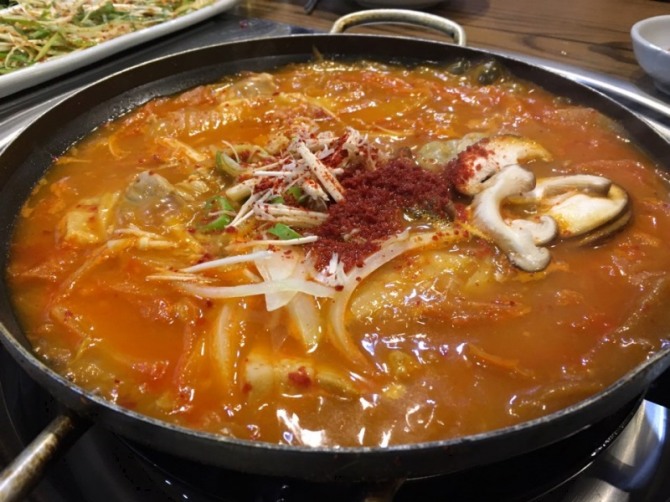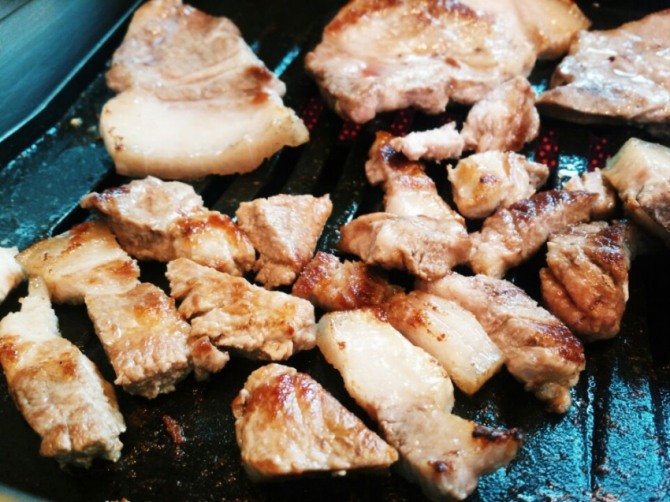Home > Feature
Drinking soju, a lesson in gastronomy
Drinking is almost a national sport in Korea, and soju takes a large chunk of the market.
Soju is so popular that the fact that mineral water sales outpaced those of soju at one of Korea’s largest supermarket chains in 2015 made headlines.
 |
| (Lotteliquor's Official Website / Chamisul's Official Website) |
Soju comes in many shapes and guises, ranging from the cheap but effective brands that cost about $1 a bottle at a supermarket to those produced using traditional methods with significantly higher price tags.
Regardless of the quality of soju, “anju,” or food eaten with the liquor, always makes an appearance any time a Korean is drinking.
A point that must be noted here is that when a dish is called “anju,” it is the liquor that is the protagonist -- not the other way around. When alcohol is consumed with a meal, then the alcohol is referred to as “banju.” The difference between the two, however, often makes little difference, with Korea having among the world’s highest alcohol consumption.
According to the World Health Organization, on average each Korean drank 12.3 liters of pure alcohol in 2010. That figure puts Korea in 15th place in terms of alcohol consumption, in company with Finland and Latvia.
For some, the anju is of paramount importance, and a dish must be a good match to the alcoholic beverage being consumed.
For soju, many prefer stew-like dishes. Known as “tang” or “jjigae,” the boundary between which can be quite confusing, there is a large variety of stew- or soup-like dishes to drink with.
 |
| kimchi stew (Korea Herald) |
The salty and spicy taste of stews such as kimchi stew covers the less-than-savory taste of soju, but some say that the soup does more than just hide the taste of alcohol.
“You need soup with soju. You can’t have soju without something with soup,” claimed a 37-year old office worker surnamed Kim.
According to Kim, the soup sooths the stomach and helps avoid acidic stomach problems associated with drinking.
Others further claim that certain dishes will help ward off the hangover.
“Kotgae-tang (blue crab stew) with soju will prevent hangovers. It’s high in protein, so if you have it as anju, you won’t get a hangover,” a proprietor of a crab restaurant in Goyang, Gyeonggi Province claimed.
 |
| Kotgae-tang with noodles (Korea Herald) |
He added that the assorted vegetables in the stew release compounds that have health benefits that not only prevent hangovers, but keep the drinker more sober.
Whether or not there is any truth to his claims, the spicy soup of crab stew, as well as many other stews enjoyed with soju, effectively cancels out the cloying taste of soju.
Others opt for meat, fish or even raw beef.
Raw beef dishes are prepared using fresh meat with various seasonings mixed with sliced pear and raw egg yolk.
Samgyeopsal, or pork belly, is a popular choice among soju lovers who opt for a meaty treat.
 |
| Samgyeopsal (Korea Herald) |
Pork belly is grilled on a gas or charcoal fire, with the end result being crispy and greasy at the same time.
And this combination of greasy-crispiness creates a taste that supposedly “asks for some soju,” and a Korean barbecue restaurant table strewn with empty bottles of the clear liquor is a common sight.
“My favorite is raw fish. Two of my favorite things ? raw fish, and soju, you can‘t go wrong with that,” 27-year old student Kim Joo-hyun said.
“Raw fish is light, so it doesn’t weigh me down when I drink. I don’t know whether the fish-alcohol combination is good or bad scientifically, but the two just go so well together.”
However, many opt for less conventional food and soju combinations that can range from simply unusual to downright strange.
Items on the list include water, soft drinks and fruits, which are more often matched with stronger liquor in Korea.
“Candy. That’s all I need when I drink soju,” said Jeon Min-ju, a student in her 20s.
“I usually go through two or three lollipops when I drink with my friends. The sweetness really covers the taste of soju, plus I don’t feel guilty for eating too much.”
By Choi He-suk (cheesuk@heraldcorp.com)




























